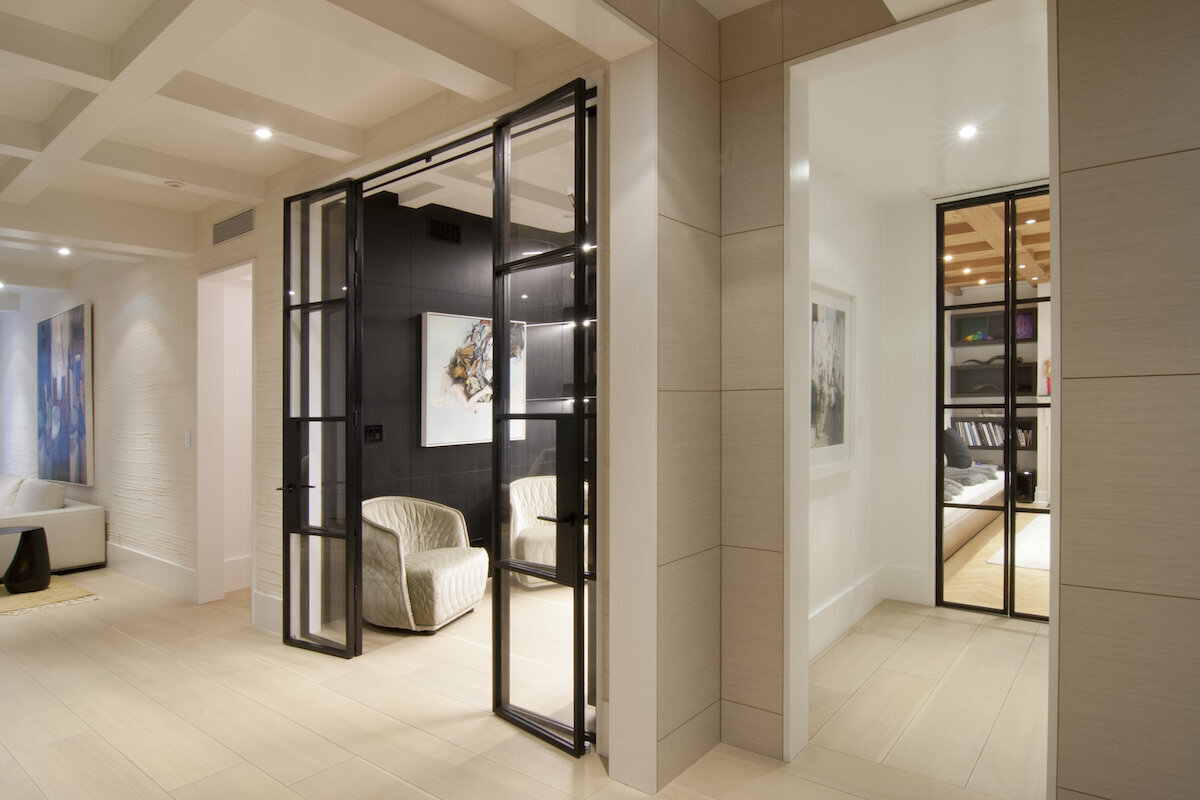Photo by Anjie Cho Arhitect PLLC
I‘m new to feng shui. How do I get started?
One of the first things I’d recommend starting with is the feng shui bagua map. In feng shui, we have this tool called the bagua, which is a conceptual map that you can overlay on a floor plan. It’s like a mandala, with eight different sections around a center. A lot of people are familiar with the bagua map, but not many people know how to lay it correctly.
According to the school of feng shui that I practice and teach, called BTB or Black Sect feng shui, we lay the bagua based on the flow of qi. We don’t use the magnetic compass directions. In BTB feng shui, the bottom of the bagua map is always aligned with the front door of your space.
It’s really great if you have a floor plan to work with. Your floor plan is a symbol for your home, and it’s one of the main tools we use as feng shui practitioners. If you’ve been following me and Mindful Design School for a while, you might know that we started doing feng shui floor plan bootcamps where we read floor plans that people have submitted. If you’d like to be notified about future sessions, make sure you’re on our mailing list!
Generally, it’s best to start with your bedroom. Your bedroom represents you. It’s usually where you spend the most time, and it’s the most private space in your home. I always spend a lot of time looking at the bedroom when I work with clients. To lay the bagua on your bedroom, stand in the doorway of your bedroom looking in. Basically, you would take the floor plan of your bedroom and divide it into a three-by-three grid with nine equal spaces, aligning the bottom of the bagua (shown below) with the entrance to your bedroom. The furthest left corner would be your wealth and abundance area, and the furthest right corner is your relationship area.
The nine areas of the bagua map relate to different areas of your life. There’s new beginnings and family, which is also related to growth and healing. Next is wealth and abundance, also connected to self-worth. The center of the bagua is the Tai qi, which represents overall wellbeing and health. Then there is the benefactors and travel area, which has to do with how people help and support you, and how you help and support the people in your life. Next is the completion area, which is related to children, offspring of any kind, and endings. Then, there’s the knowledge area, connected to your self-cultivation, skills, and spirituality. The next area is your fame, reputation, and inspiration. Then there’s career, also connected to your path in life and wisdom. The last area is relationships and partnerships, which is related to self care, the mother element, and the feminine principle.
The wealth and relationships areas tend to be the most popular areas of the feng shui bagua map, but I invite you to go a little bit deeper in how you think about them. The superficial way of looking at these areas is to think about them as money or finding a partner. That’s part of it, but they are also so much more. At Mindful Design School, we require our students to learn and use the Chinese names for each area of the bagua, because the words “wealth” and “abundance” are limited. That area of the bagua, called Xun in Chinese, can mean so many other things as well.
Laying the bagua on your bedroom is a great way to get started with feng shui. If you want to dive deeper, I recommend checking out Mindful Design’s feng shui courses or working one-on-one with a consultant!
If you’d like to learn more about feng shui, check out Mindful Design Feng Shui School at: www.mindfuldesignschool.com



